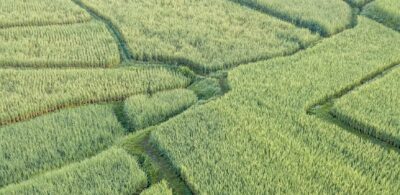Biodiversity policy in the 2022 Federal Election Part 2: influences on future biodiversity regulation in Australia
18 May 2022
Like climate change and the environment, biodiversity will feature heavily in future national Australian policy and regulation. This Insight, the second of our two-part series, considers a key upcoming conference and important reports likely to impact the future of biodiversity regulation across Australia. In part one of the series, we considered the policies of the major political parties for the 2022 Federal Election.
Regardless of the outcome of the election and each major party’s policy position on biodiversity issues there are a range of upcoming conferences and reports which focus on biodiversity issues and are likely to influence future development of biodiversity regulation in Australia.
Final Senate committee report on Australia’s faunal extinction crisis
The Australian Senate’s Environment and Communications References Committee (Committee) is due to release its final report on Australia’s faunal extinction crisis on 2 August 2022. The terms of reference for the report include the ongoing decline in the population and conservation status of Australia's nearly 500 threatened fauna species, as well as the adequacy of Commonwealth environment laws, including the Environment Protection and Biodiversity Conservation Act 1999 (Cth) (EPBC Act), in providing sufficient protections for threatened fauna and against key threatening processes.
In its interim report in 2019, the Committee queried whether the EPBC Act is still fit for purpose given Australia's increased rate of faunal extinction since the introduction of the EPBC Act. The interim report also recommended that to limit the drivers of faunal extinction, the Commonwealth develop new environmental legislation to replace the EPBC Act and establish an independent Environment Protection Agency, with sufficient powers and funding to oversee compliance with Australia's environmental laws.
Given these conclusions and recommendations, it seems highly unlikely that the final report will bear better news in terms of the efficacy of Australia’s biodiversity strategies. Accordingly, it may be a catalyst for further policy discussion on biodiversity and the state of the environment generally.
Latest State of the Environment Report
Every five years a comprehensive review is undertaken of the state of the Australian environment and the resulting report provides information about Australian environmental and heritage conditions, trends and pressures. Twelve broad themes are covered by the report, including biodiversity. In this regard, the 2016 State of the Environment Report concluded that “the status of biodiversity in Australia is generally considered poor and deteriorating”.
The 2021 report was provided to the Federal Coalition Government in December last year and, as yet, has still not been made public. This delay is unsurprising given the timing of the federal election and the very high likelihood that the report’s findings on biodiversity will be sombre, particularly after the 2019–2020 bushfire season.
Upcoming UN Biodiversity Conference (COP 15)
The second part of the UN Biodiversity Conference (COP 15) will take place on 1 October 2022 in Kunming, China. The Conference convenes parties to the Convention on Biological Diversity (Convention), including Australia, to agree to a new Post-2020 Global Biodiversity Framework. The new framework will set new global goals and targets for biodiversity for the next 10 years, and replace the Convention’s previous Strategic Plan for Biodiversity 2011-2020 (which includes the Aichi Biodiversity Targets).
Under the Convention, Australia is required to report on its national implementation of the Convention and national biodiversity strategies. Whilst Australia’s latest report came out in 2020, this upcoming conference will again likely generate significant national and international attention on the nature and adequacy of the Australian government’s actions and strategy on biodiversity protection.
Key takeaways
Regardless of the biodiversity policies put forward during the 2022 Federal Election, COP15 and the significant forthcoming conferences and reports outlined above are likely to further highlight growing Australian and global biodiversity concerns. Accordingly, much more future discourse on biodiversity regulation and the adequacy of this regulation at federal, state and global levels can be expected.
This article is part of our Australian Federal Election 2022 Insight collection. Read more here.
Authors

Head of Environment and Planning

Senior Associate
Associate
Tags
This publication is introductory in nature. Its content is current at the date of publication. It does not constitute legal advice and should not be relied upon as such. You should always obtain legal advice based on your specific circumstances before taking any action relating to matters covered by this publication. Some information may have been obtained from external sources, and we cannot guarantee the accuracy or currency of any such information.
Key Contact
Head of Environment and Planning



